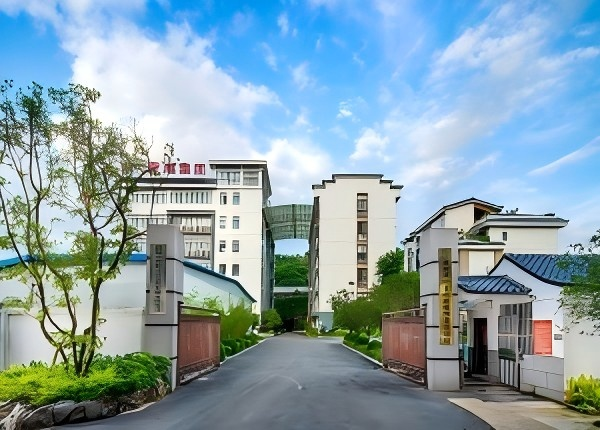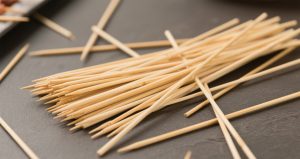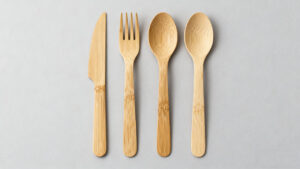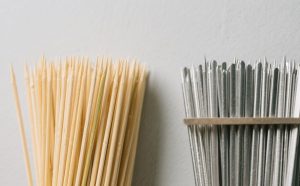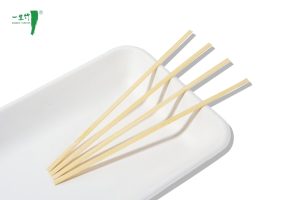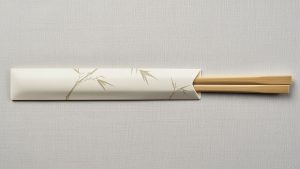When you snap apart a pair of disposable chopsticks, do you know what material you're about to put in your mouth?
The most common materials for disposable chopsticks are bamboo1 (41% global share) and aspen wood2 (35%), followed by birch and cedar according to GB/T 24398-2009 standards1.
 Let's examine why these materials dominate the market and how they affect both quality and sustainability.
---
Let's examine why these materials dominate the market and how they affect both quality and sustainability.
---
Why Are Bamboo and Aspen Popular Choices for Disposable Chopsticks?
Bamboo grows 30x faster than hardwoods—but speed isn't its only advantage for chopstick production. Bamboo's natural density prevents splintering (meeting GB 19305 safety standards)2, while aspen's straight grain enables efficient milling (producing 50,000 pairs/hour)3.
Material Advantages Comparison:
| Feature | Bamboo | Aspen |
|---|---|---|
| Growth Cycle | 3-5 years | 10-15 years |
| Splinter Risk | Low | Medium |
| Production Yield | 65% | 80% |
| Cost per Pair | $0.008 | $0.006 |
How Does the Wood Type Affect the Quality of Disposable Chopsticks?
Your chopstick's wood type determines everything from food safety to dining experience. Premium carbonized bamboo1 (T/ZZB 2109-2021) resists mold naturally4, while cheaper woods may require chemical treatments (limited by GB 9685 additive standards)5.
Quality Indicators by Material:
| Material | Strength | Food Safety | Common Uses |
|---|---|---|---|
| Carbonized Bamboo | High | No additives needed | Sushi restaurants |
| Aspen | Medium | May need coatings | General takeout |
| Birch | High | Natural antimicrobial | Premium brands |
| Cedar | Low | Strong odor (not ideal) | Rarely used now |
How Sustainable Are the Woods Used in Disposable Chopstick Production?
37 million trees are felled annually for chopsticks—here's how the industry is responding. FSC-certified bamboo1 grows back in 3 years (vs. decades for trees)4, and crop fiber alternatives (rice husks) now comprise 15% of the market1.
Sustainability Scorecard:
| Material | Renewability | Carbon Footprint | Certifications |
|---|---|---|---|
| Bamboo | ★★★★★ | 0.2kg CO₂/pair | FSC, ISO 14001 |
| Aspen | ★★★☆☆ | 0.5kg CO₂/pair | PEFC |
| Crop Fibers | ★★★★★ | 0.1kg CO₂/pair | GB/T 24398-2009 |
| Recycled Wood | ★★☆☆☆ | 0.3kg CO₂/pair | Limited availability |
Conclusion
Bamboo leads in sustainability while aspen dominates cost-efficiency—choose certified products to ensure food safety and environmental responsibility.---
References
- 1. Explore the advantages of bamboo in chopstick production, including sustainability and safety standards. ↩
- 2. Learn about aspen wood's properties that make it ideal for chopsticks, including its efficient milling and cost-effectiveness. ↩
- 3. Aspen wood milling efficiency data ↩
- 4. T/ZZB 2109-2021 carbonized bamboo[^1] standards ↩
- 5. GB 9685 food additive regulations ↩


